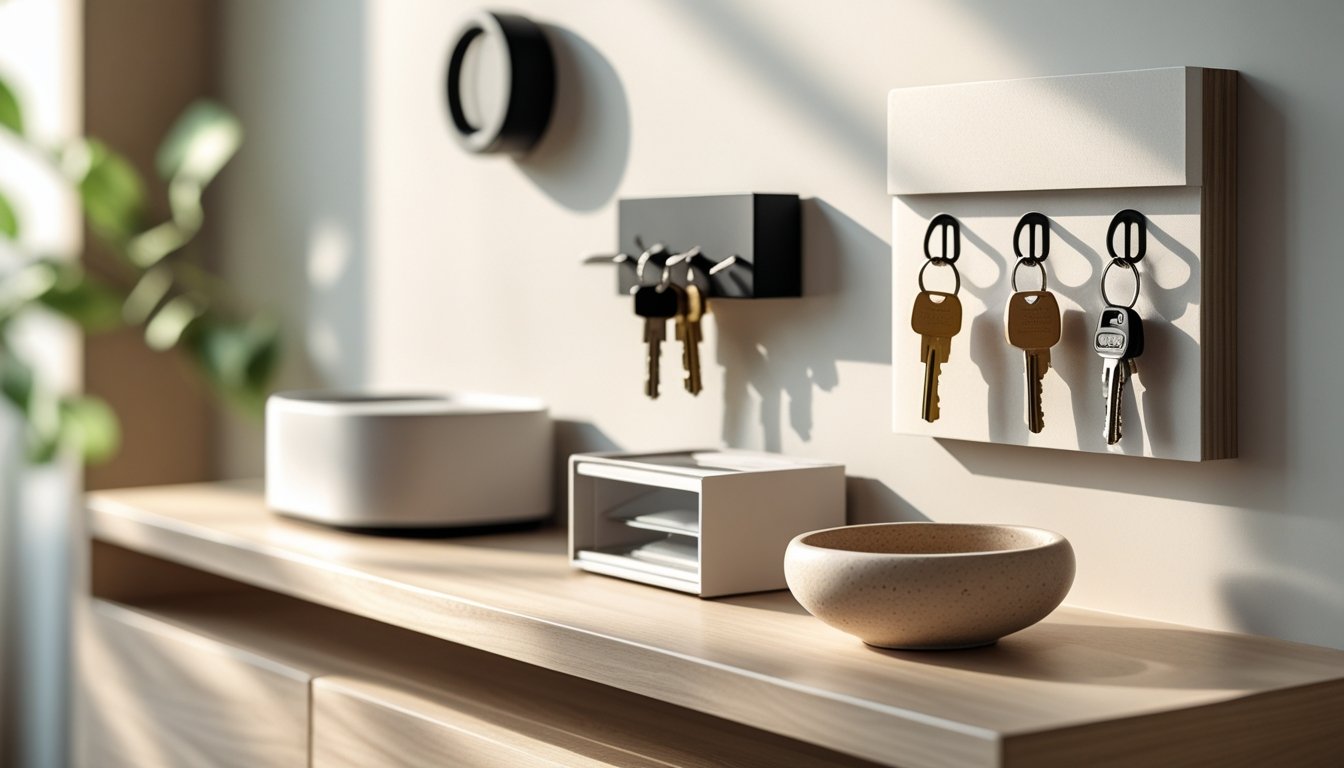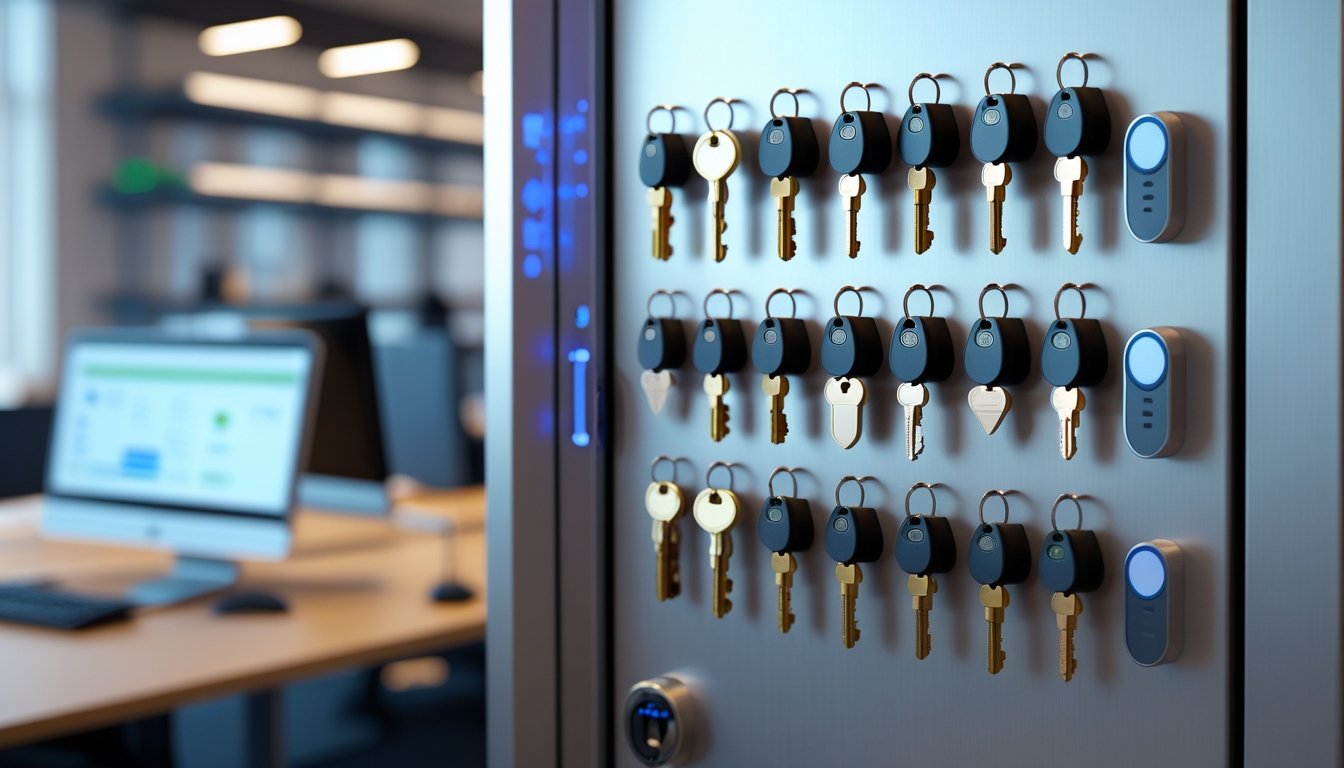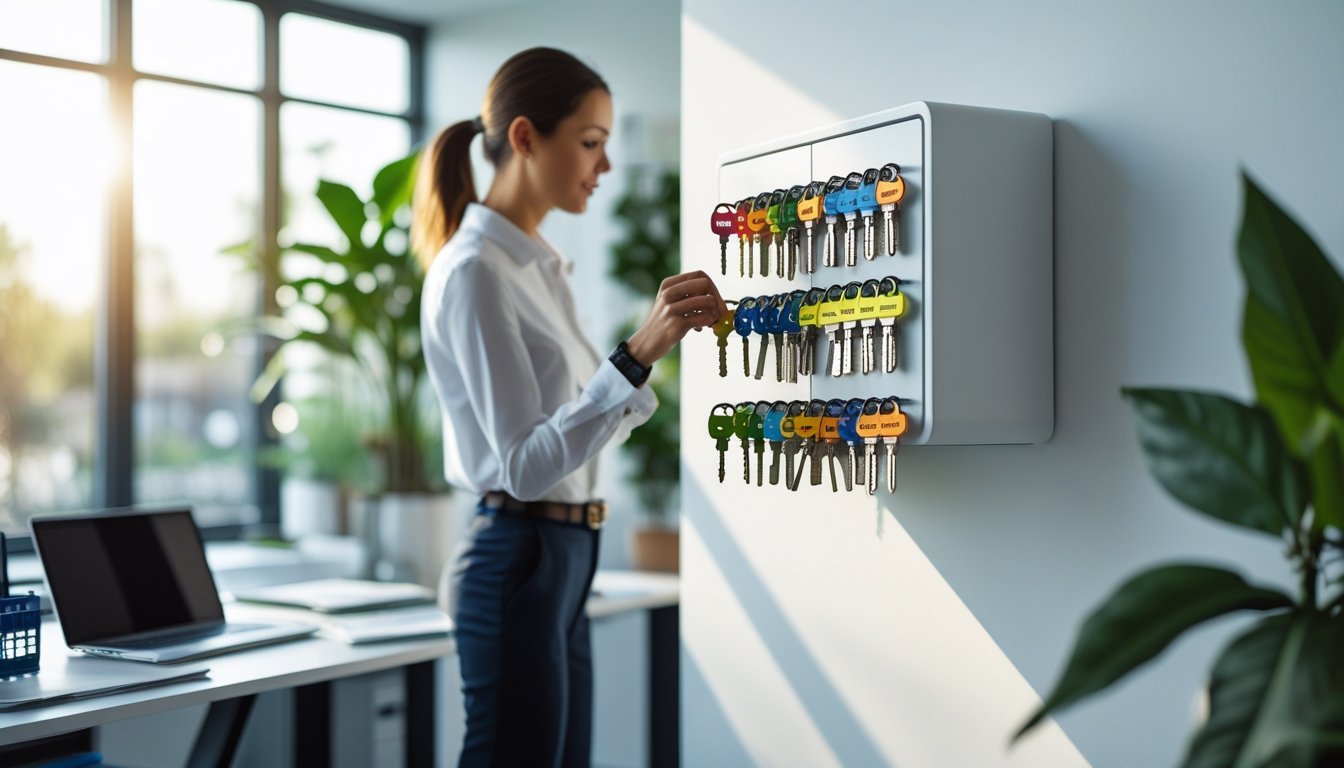Late updated: 14 Jul 2025 18:07
Written by: Elena Prescott
Exploring Unique Key Storage Solutions: Innovative Methods for Secure Management
In the fast-paced world where security needs are constantly evolving, how we store and manage keys has never been more critical. With a myriad of key storage solutions at our disposal, from innovative smart systems to traditional lock boxes, choosing the right one can be a daunting task. It's important to identify key management solutions that not only enhance security but also streamline access and reduce the risk of unauthorised entry.

We have many options available, including electronic key boxes and locker systems, each offering unique benefits tailored to different needs. As discussions within the crypto community shift towards more sophisticated methods, both physical and digital solutions are transforming how we protect our valuable assets. These advancements provide us with smarter, more effective ways to manage access and security.
Exploring the landscape of key storage solutions reveals exciting possibilities for increasing safety in both personal and professional settings. As technology advances, we can expect even more innovative methods to keep our keys and assets secure. By understanding the core principles of key storage and staying informed about cutting-edge developments, we can make informed decisions to suit our specific needs.
Key Takeaways
- Key management solutions enhance security and streamline access.
- Innovative storage options are transforming asset protection.
- Staying informed aids in choosing suitable key storage solutions.
Core Principles Of Unique Key Storage Solutions

Exploring key storage solutions reveals essential practices and technologies. By understanding these core principles, we can enhance security and efficiency in managing cryptographic keys.
Key Management Fundamentals
Effective key management is integral to maintaining secure digital environments. Key lifecycle management involves generating, distributing, storing, and ultimately retiring keys. Proper key segregation plays a critical role by ensuring that operational keys are isolated from backup or archival keys.
We advocate leveraging automated key management systems that provide a comprehensive audit trail. This automation not only reduces human error but also enhances traceability. Moreover, systems must support scalability to handle increasing volumes of keys, particularly in large organisations.
Cloud-based key management solutions offer flexibility but require strict data access controls. Diverse deployment options, such as on-premises hardware security modules (HSMs), can provide additional layers of security.
Security Considerations For Key Storage
Security-focused key storage must cater to confidentiality, integrity, and availability. Using hardware-based solutions, such as HSMs, ensures keys are stored in tamper-resistant environments. These devices offer isolated processing capabilities, making them less susceptible to attacks.
Encryption is critical for protecting keys at rest and in transit. Implementing role-based access control ensures that only authorised users can access or manage the keys, reducing internal threats. Regularly updated security patches and system configurations further protect against vulnerabilities.
We should assess potential threats and conduct regular security audits, which help identify weaknesses and improve storage solutions. Physical security measures, like restricted access to server rooms, also play a vital role in maintaining the integrity of key storage systems.
Traditional Versus Digital Key Storage Methods
Traditional methods of key storage, such as physical safes and lockboxes, provide tangible control but can be cumbersome in scale. Digital storage solutions, conversely, offer rapid access and integration with existing IT infrastructure, which is beneficial for real-time applications.
With traditional means, key duplicates must be minimised to prevent unauthorised access. In contrast, digital methods, using techniques like Public Key Infrastructure (PKI), allow for efficient key distribution and simplified management.
However, transitioning from traditional to digital requires ensuring digital literacy and robust cybersecurity practices. Evaluating both methods highlights the importance of situational adaptability in meeting specific security and operational needs. Our choice between these methods depends significantly on the particular requirements and risk profiles of our environments.
Innovative And Secure Methods For Storing Keys
Incorporating modern technology, innovative methods for secure key storage have become essential. From hardware solutions to digital innovations, these approaches ensure enhanced protection against potential threats.
Hardware Wallets: Strengths And Limitations
Hardware wallets offer a robust method for storing cryptographic keys offline. These physical devices provide an isolated environment for key manipulation, minimising exposure to the internet and potential cyber threats. Their strength lies in their resilience against malware.
Despite their advantages, hardware wallets are not without limitations. They can be costly and may require backups of seed phrases or passwords to prevent loss. Users must be vigilant in maintaining the integrity of the backup processes to mitigate risks of theft or damage.
Evaluating Cloud Storage Solutions
Cloud storage presents a convenient solution for managing keys, offering remote access and scalability. Through advanced encryption techniques, cloud platforms ensure that stored data is well-protected against breaches. This method suits users seeking flexible management across multiple devices.
However, potential vulnerabilities exist in cloud storage, such as the risk of data exposure in the event of a service provider breach. Relying on reputable providers with strong security measures and regular audits is critical to secure storage.
Paper Wallets And Physical Alternatives
Paper wallets emphasise complete offline storage, providing an economical option for safeguarding keys through printed QR codes and alphanumeric sequences. Stored responsibly, this approach limits exposure to internet-based threats.
While cost-effective, paper wallets carry risks of physical loss or damage. Environmental factors like fire or water can compromise the information, necessitating secure storage methods such as safes. Another alternative involves using tamper-evident envelopes for additional protection.
Creative Approaches: Air-Gapped And Shamir Secret Sharing
Air-gapped systems employ physical separation from the internet to secure data. By keeping key-generation devices offline, exposure to cyber threats is reduced. This method is particularly effective in environments demanding high security.
Shamir's Secret Sharing introduces an intriguing method of splitting a key into multiple parts. This allows multiple parties to reconstruct the key only when a threshold number of shares are combined. It increases security by distributing the risk among trusted parties, thus reducing the chance of complete compromise.
Frequently Asked Questions

In this section, we explore creative key storage ideas, DIY organisers, materials for durable holders, unique wooden designs, steps for bespoke solutions, and innovative alternatives to traditional racks.
What are the most creative ways to store keys?
Creative key storage can transform mundane objects into functional decor. Options include using vintage picture frames as key holders or repurposing old corks to create a quirky key rack. Additionally, magnetic strips provide a sleek, modern look for storing keys. These solutions not only keep keys organised but also add aesthetic appeal.
How can one craft a DIY mail and key organiser?
Creating a DIY mail and key organiser involves basic woodworking skills and creativity. Begin with a sturdy board or old frame, add hooks for keys, and attach holders or slots for mail. Consider painting or staining the organiser to match your interior. Personalised touches, like labels or small chalkboards, can enhance functionality.
What materials are best suited for making a durable key holder at home?
When crafting a durable key holder, consider materials like hardwood, metal, and acrylic. Hardwood provides longevity and a classic appearance, while metals offer robust and contemporary options. Acrylic is versatile, allowing for different shapes and customisation. Selecting quality materials ensures the key holder withstands daily use and complements home decor.
What are some unique designs for wooden key hangers?
Wooden key hangers offer endless design possibilities. Consider minimalist designs using live-edge wood for a natural look. Incorporate geometric patterns or woodburned art for a unique twist. Some designs include small shelves or cubbies, combining utility with elegance. These key hangers not only organise but also enhance wall decor.
What steps are involved in creating a bespoke key storage solution?
Creating a bespoke key storage solution starts with assessing your needs and available space. Design the holder, considering the number of keys and aesthetic preferences. Select quality materials and gather tools. Construct the holder following your design, then apply finishes or embellishments for a personalised touch. Testing stability and functionality finalises the process.
Can you suggest any innovative alternatives to traditional key racks?
Innovative alternatives to traditional key racks include key bowls made from resin or ceramic, offering a colourful splash to entryways. Pegboards provide flexible storage, accommodating various key sizes. Alternatively, 3D-printed custom key holders allow for personalised designs. These alternatives provide both practicality and artistic flair to key storage solutions.
